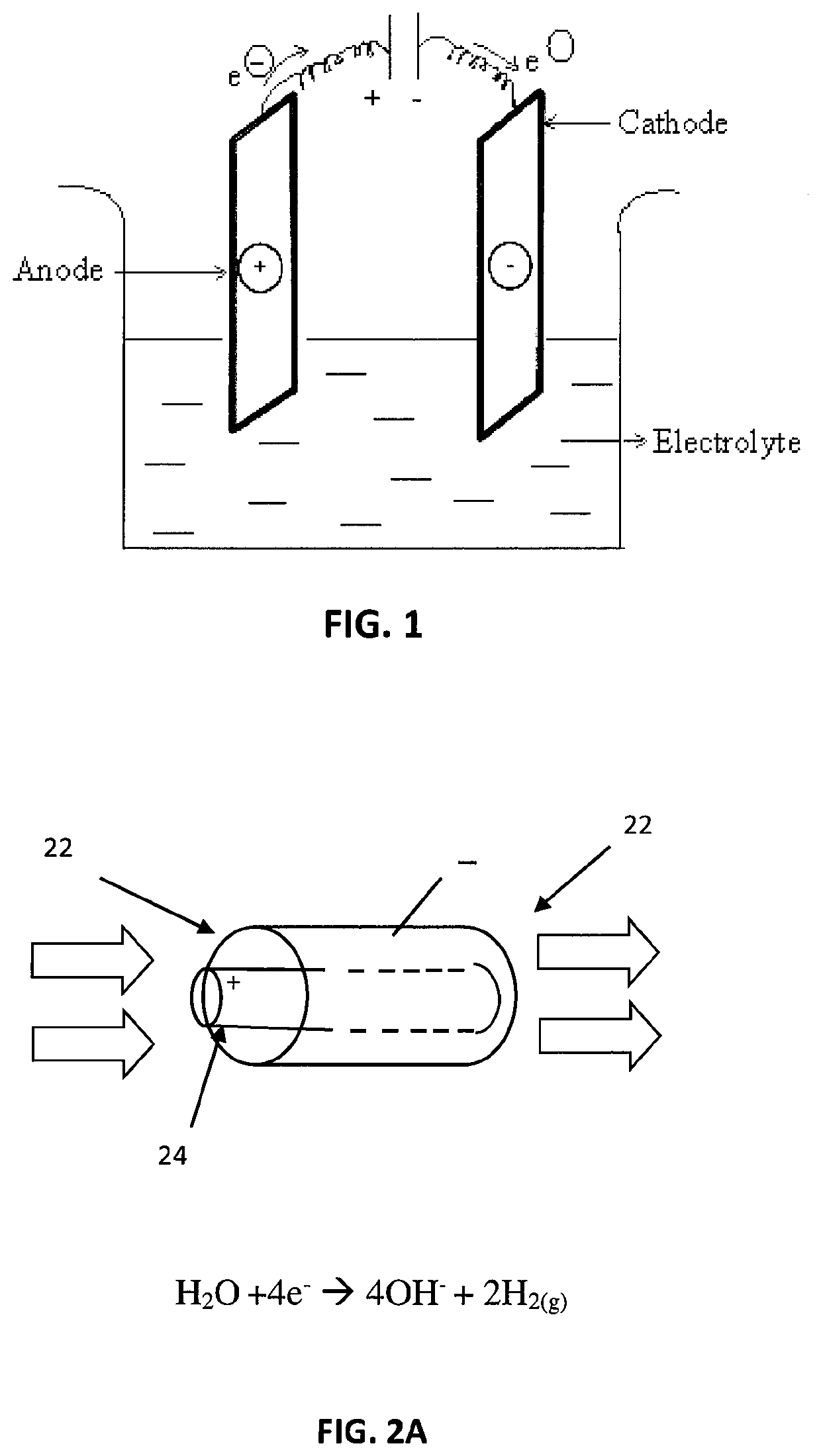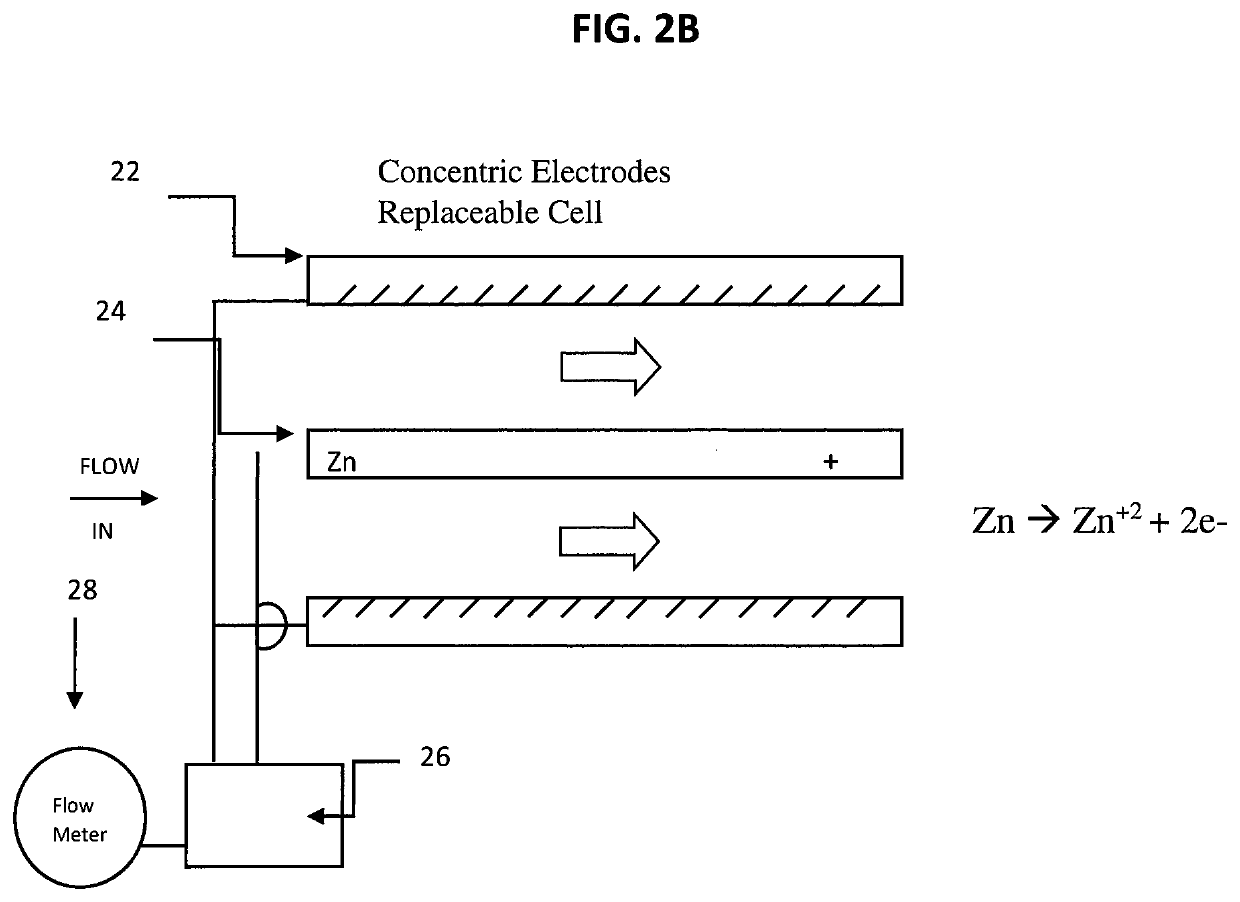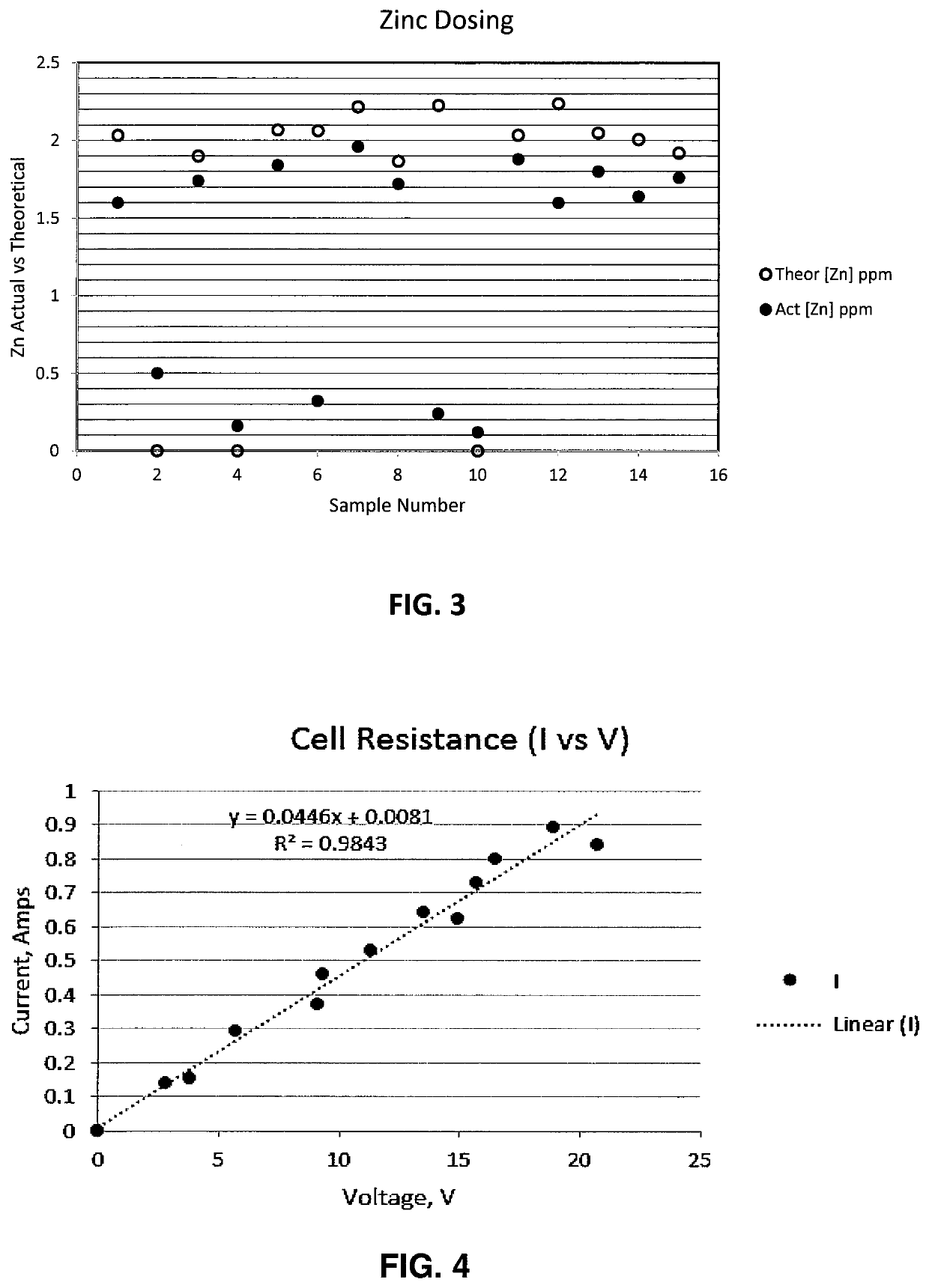Electrolytic zinc dosing device and method for reducing scale
a technology of electrolytic zinc and dosing device, which is applied in the direction of water/sludge/sewage treatment, specific water treatment objectives, chemistry apparatus and processes, etc., can solve the problems of preventing effective heat transfer, affecting the cleaning process, and affecting the effect of fluid flow
- Summary
- Abstract
- Description
- Claims
- Application Information
AI Technical Summary
Benefits of technology
Problems solved by technology
Method used
Image
Examples
Embodiment Construction
)
[0027]In describing the preferred embodiment of the present invention, reference will be made herein to FIGS. 1-10 of the drawings in which like numerals refer to like features of the invention.
[0028]Electrolysis is a technique that uses a direct electric current (DC) to drive an otherwise non-spontaneous chemical reaction. The use of an electrolytic cell allows for the dosing or decomposition of chemical compounds into solution. In the present case, an electrolytic cell is used as a means for dosing the solution with a zinc compound in order to reduce the build-up of scale.
[0029]FIG. 1 depicts an electrolytic cell 10 having two zinc electrodes 12, 14 in solution 16. A voltage source 18 drives the reaction shown between the positive zinc electrode 12 and the negative zinc electrode 14. At the anode (12) the majority of the applied current produces Zn+2. The reaction at the anode may be represented as:
Zn═Zn+2+2e−
2Cl−═Cl2(g)+2e−
[0030]In this reaction, zinc atoms in the electrode shed...
PUM
| Property | Measurement | Unit |
|---|---|---|
| hardness | aaaaa | aaaaa |
| polarity | aaaaa | aaaaa |
| power | aaaaa | aaaaa |
Abstract
Description
Claims
Application Information
 Login to View More
Login to View More - R&D
- Intellectual Property
- Life Sciences
- Materials
- Tech Scout
- Unparalleled Data Quality
- Higher Quality Content
- 60% Fewer Hallucinations
Browse by: Latest US Patents, China's latest patents, Technical Efficacy Thesaurus, Application Domain, Technology Topic, Popular Technical Reports.
© 2025 PatSnap. All rights reserved.Legal|Privacy policy|Modern Slavery Act Transparency Statement|Sitemap|About US| Contact US: help@patsnap.com



